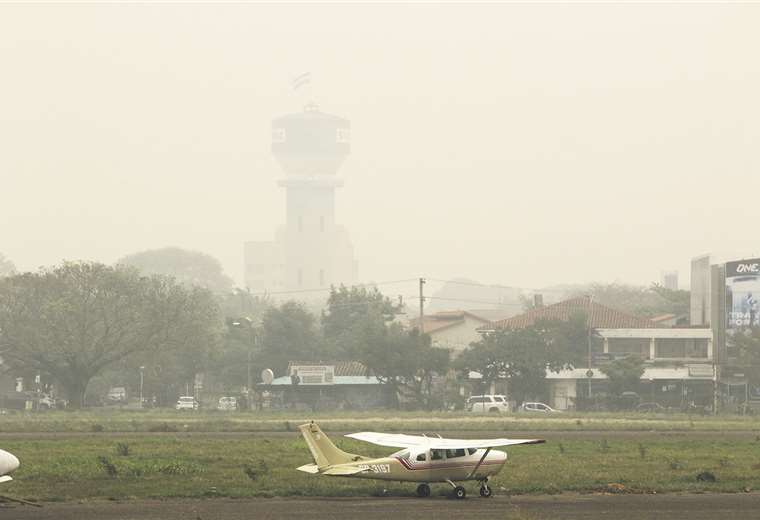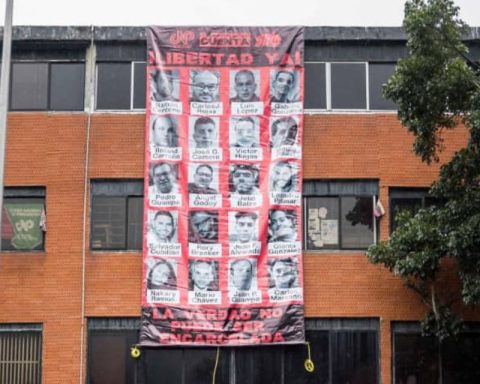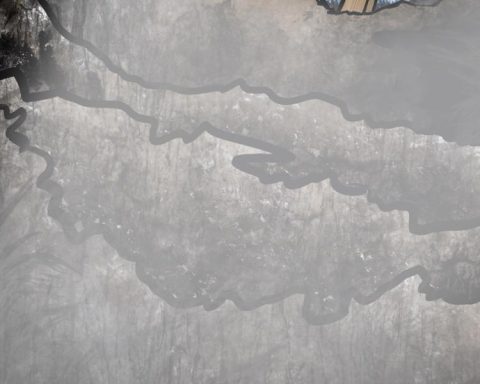September 8, 2024, 8:49 AM
September 8, 2024, 8:49 AM
Almost four million hectares of forests had to be burned in Bolivia, most of them in Santa Cruz, before national and regional authorities activated the legal mechanisms for emergencies and disasters that allow for the management of international aid and the mobilization of extraordinary financial resources.
The departments of Beni, Pando and Santa Cruz, as well as a good part of La Paz woke up yesterday with “highly dangerous levels for health” due to the massive devastation caused by the fires. In the midst of the tragedy, Foreign Minister Celinda Sosa called together representatives of multilateral cooperation organizations, as well as ambassadors of the diplomatic corps accredited in the country.
“After Beni was declared a disaster and Santa Cruz was declared in emergency, and in light of the fire situation, the national government has decided to declare a national emergency and we are taking the necessary steps as soon as possible to have a more agile dynamic and access the support of the cooperating agencies,” said yesterday the Minister of Defense, Edmundo Novillo, who participated in that session at the Foreign Ministry. In addition to Sosa, the Minister of Environment and Water, Alan Lisperguer, was present.
The minister clarified that the cooperation efforts with the international community have been active for some time, and with the declaration of emergency, they will be expanded and are expected to arrive more quickly. In fact, President Luis Arce had announced the arrival of brigade members from Brazil and Chile.
Domestically, according to Novillo, the declaration will allow for better inter-ministerial coordination and also with the governorates, municipalities and other sub-national institutions affected by the effects of the forest fires. The Government is planning international support from firefighters, experts, aircraft and equipment. In addition, the declaration of emergency will allow for greater health care and humanitarian aid to the affected populations and to the firefighters who are putting out the fires.
So far this year, 3.8 million hectares have been consumed by forest fires, of which 1.5 million hectares correspond to forested areas, Lisperguer reported yesterday.
“We have 1.5 million hectares that have been affected by forest areas and 2.3 million hectares that have been identified in grassland areas,” the authority said.
The situation is critical, as there are currently 72 active fires in the country, of which 64 are in Santa Cruz, 6 in Beni, one in Pando and one in the Amazon region of La Paz.
Yesterday, a team of experts from Brazil entered San Ignacio de Velasco, one of the most affected municipalities, to coordinate an Intervention and Combat Plan against the fires affecting both countries, the president reported.
The Satellite Monitoring Center has been installed in San Ignacio and the Joint Binational Command Bolivia – Brazil will operate from there, to coordinate an intervention and combat plan against the fires, which are currently affecting both countries,” Arce reported through his social networks.
The plan to be implemented on site includes setting up camps in the municipalities of San Ignacio de Velasco, in the Noel Kempff Mercado Park; also in Concepción and Guarayos, the most devastated. The flames will be fought by land and air.
Chile will soon send experts from the National Forestry Corporation, such as forest fire extinguishing operations technicians and fire behavior analysts.
The Government is also negotiating with France, through the European Union, the arrival of 80 forest firefighters to reinforce the fight against the fires.
Yesterday at noon, the Departmental Emergency Operations Center (COED) reported that the Government of Santa Cruz was preparing to declare a disaster due to forest fires, which was confirmed at the end of the afternoon by the acting governor, Mario Aguilera.
Days earlier, several actors, including legislators and environmental activists, complained on social media about the delay in declaring a disaster, even after Beni, which was less affected by the fires. They reminded him that last year, in November, when he was vice-governor, he demanded the declaration of a disaster as an act of “humanity.”
As night fell, Aguilera issued the departmental disaster decree due to the unstoppable fires that are ravaging the Santa Cruz region. “This situation demands it. We find ourselves in the need to declare a departmental disaster,” he read at the end of this afternoon.
This measure responds to the need to channel government support and international aid.
In addition, the Departmental Health Service (Sedes) recommended that the relevant authorities “consider the suspension of in-person classes in educational units in the most affected municipalities,” since yesterday was the worst day of the year in terms of air pollution.
Yesterday, the capital of Santa Cruz had poor air quality, reaching a peak in the Air Quality Index (AQI) of 261 micrograms per cubic meter, which made it the most polluted day so far this year. “We can say that today (yesterday) is the most polluted day of the year. It is recommended to permanently reduce exposure to open spaces and outdoor physical activities,” said the head of the Department of Water and Atmospheric Pollution, Diego Rojas.
According to the Governor’s Office, 64 active fires were recorded yesterday in 18 municipalities, with an area of approximately 3,347,591 hectares affected.
Given this scenario, the Ministry of Health declared a health emergency in the country due to the poor air quality. They will wait until today to evaluate together with the Ministry of Education and take the measures that will be in effect from Monday.
María Renée Castro, Minister of Health and Sports, stressed that the health emergency is due to the fact that the air quality index quickly went from bad to very bad and “one department went to extremely very bad.”
Castro stressed that there is a dangerous context for health, particularly for vulnerable groups such as children and pregnant women.
The authority explained that due to environmental conditions, work must be done on short-term effects, such as preventing respiratory and cardiovascular diseases and poisoning.


















